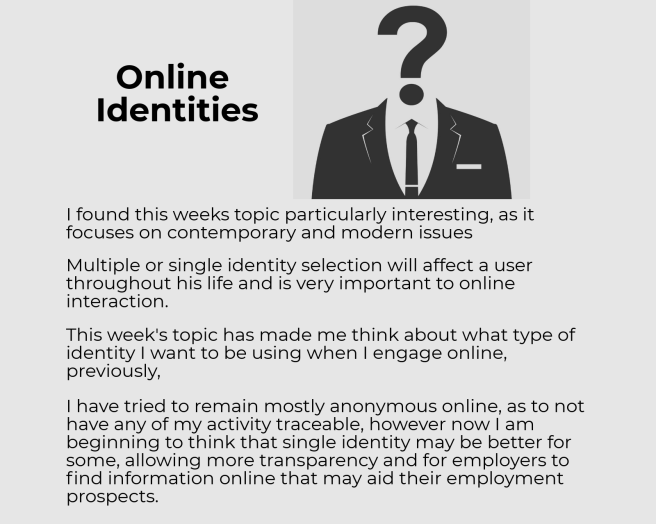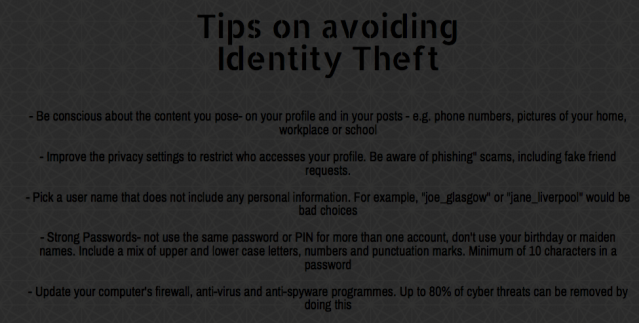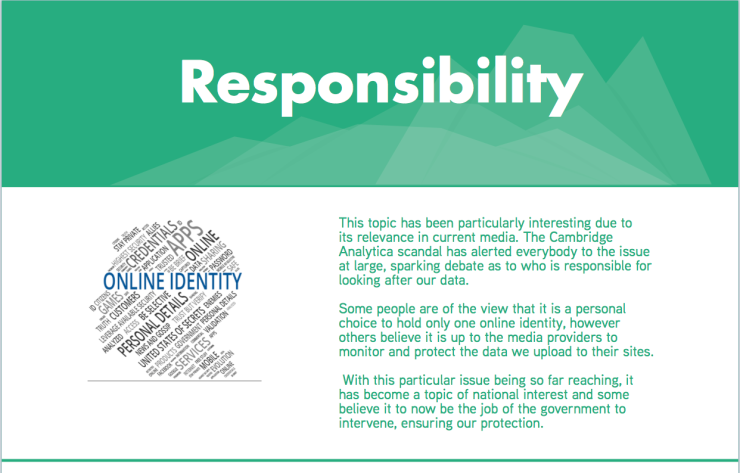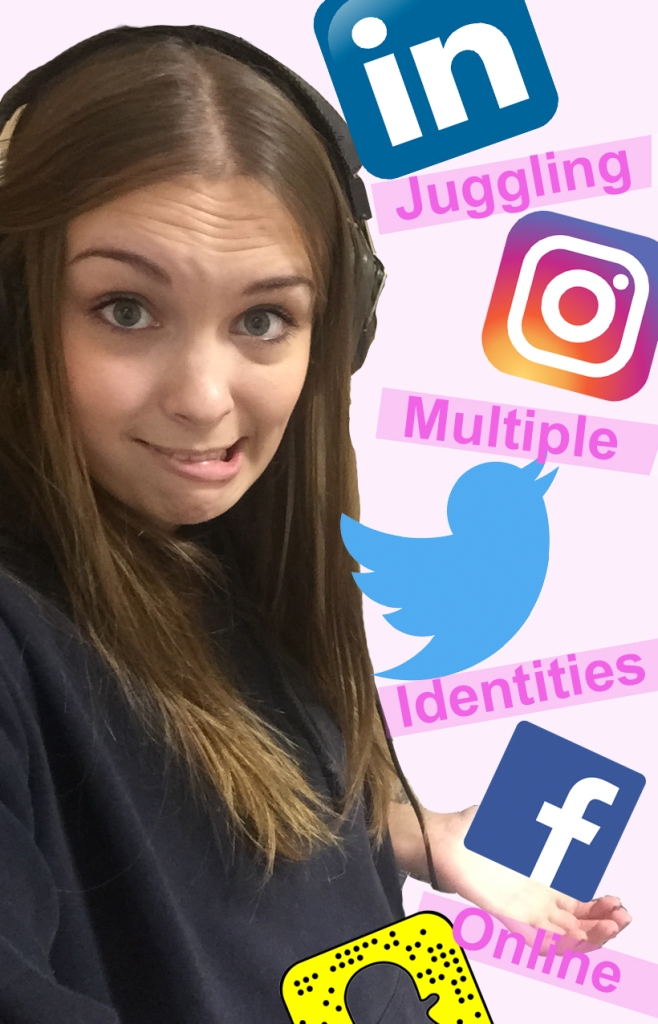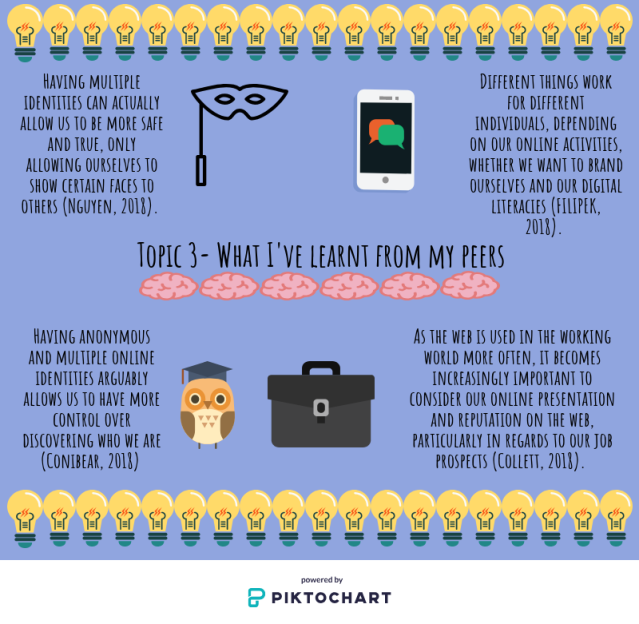
Reflecting on the power of multiple identities.
There are a wide range of advantages and drawbacks of having single and multiple online identities as discussed within my previous post. However, since reflecting upon the topic and reading a range of blogs, as shown within my Piktochart, I believe that I overlooked some of the advantages of having multiple online identities.
Continue reading →

